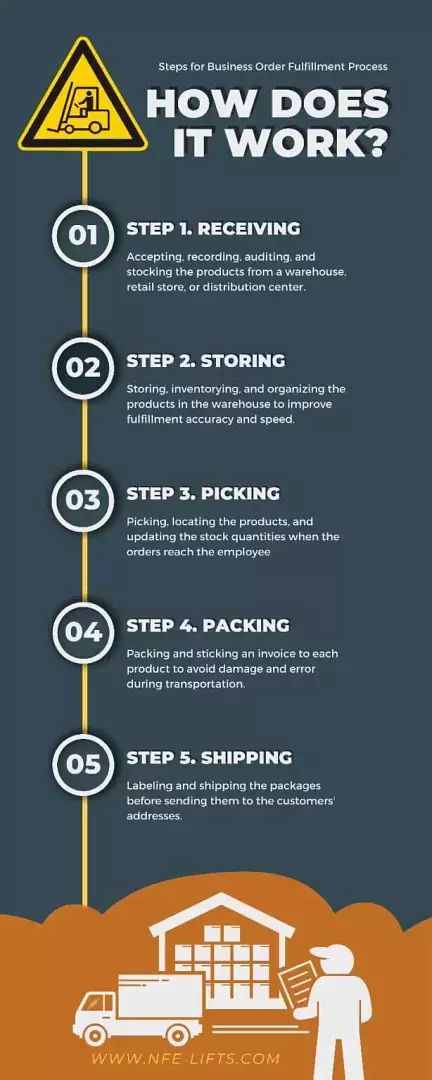 How does it work? Receiving that package on your doorstep has just come from a long line of precision processing and shipping known as the Fulfillment Process. From placing your initial order, to the warehouse receiving that paid purchase order, to packing it up and shipping it to you, is vital to the eCommerce and retail management system. Most warehouse operations and staff can integrate with specific companies’ eCommerce software to accomplish this.
How does it work? Receiving that package on your doorstep has just come from a long line of precision processing and shipping known as the Fulfillment Process. From placing your initial order, to the warehouse receiving that paid purchase order, to packing it up and shipping it to you, is vital to the eCommerce and retail management system. Most warehouse operations and staff can integrate with specific companies’ eCommerce software to accomplish this.
Step 1. Receiving
The receiving step in the purchase process includes and, in this order, accepting the arrival of inventory from a warehouse, retail store, or distribution center., recording it properly, auditing to ensure you have received the correct item, and the finally, stocking the products.
Step 2. Storing
Storing, inventorying, and organizing the products in the warehouse to improve fulfillment accuracy and speed is a vital key to the turnaround time in the transaction. Once goods are received every attempt is made to get that package back out and on its way to the customer. Very little time, if any, is ideal for storing these packing at this stage of the transaction.
Step 3. Picking
Picking, locating the products, and updating the stock quantities when the orders reach the employee is the third step in this process. Considering whether the process has been seamless or not up to this point can make all the difference in “picking”, or retrieving the correct items from warehouse storage. We have skilled forklifts operators and well-oiled heavy-duty forklifts ready and waiting to pick h and every order. Many warehouses are now using automation solutions to find each item, as quickly and some as easy as the touch of a finger. Such solution systems include robotic assistance, wireless headsets, and voice technology.
Step 4. Packing
Packing and sticking an invoice to each product to avoid damage and error during transportation is the fourth step in the fulfillment process. Appropriate warehouse staff will assemble all materials necessary to securely wrap each package and according to its size and weight. Labeling and shipping the packages before sending them to the customers’ addresses. Understanding and utilizing space on your delivery vehicles is also a key step in this process. That is a management process that could be considered a separate role.
Step 5. Shipping
The packages leave your warehouse, on a securely loaded, sometimes third-party delivery vehicle. Depending on the carrier, your package will be handled under strict company policies, ensuring the cleanest, most straightforward delivery. The package may be handled again and again, by several carriers along the way. USPS takes its fair share of hand-offs from the larger shipping companies.
“Storing, inventorying, and organizing the products in the warehouse to improve fulfillment accuracy and speed is a vital key to the turnaround time in the transaction.”
Returns
Aside from fulfilling orders as efficiently as possible, almost 20% of shoppers (in the eCommerce industries that is) will not make a purchase if there are fees associated with a return.
Step 6. Handling Returns
Most shipping for customer returns are expected to be easy and the more flexible you are with shipping including allowing different shipping rates and options, allowing customers to edit their orders and returns, can easily create a better customer experience and relationship or it can sever it.
